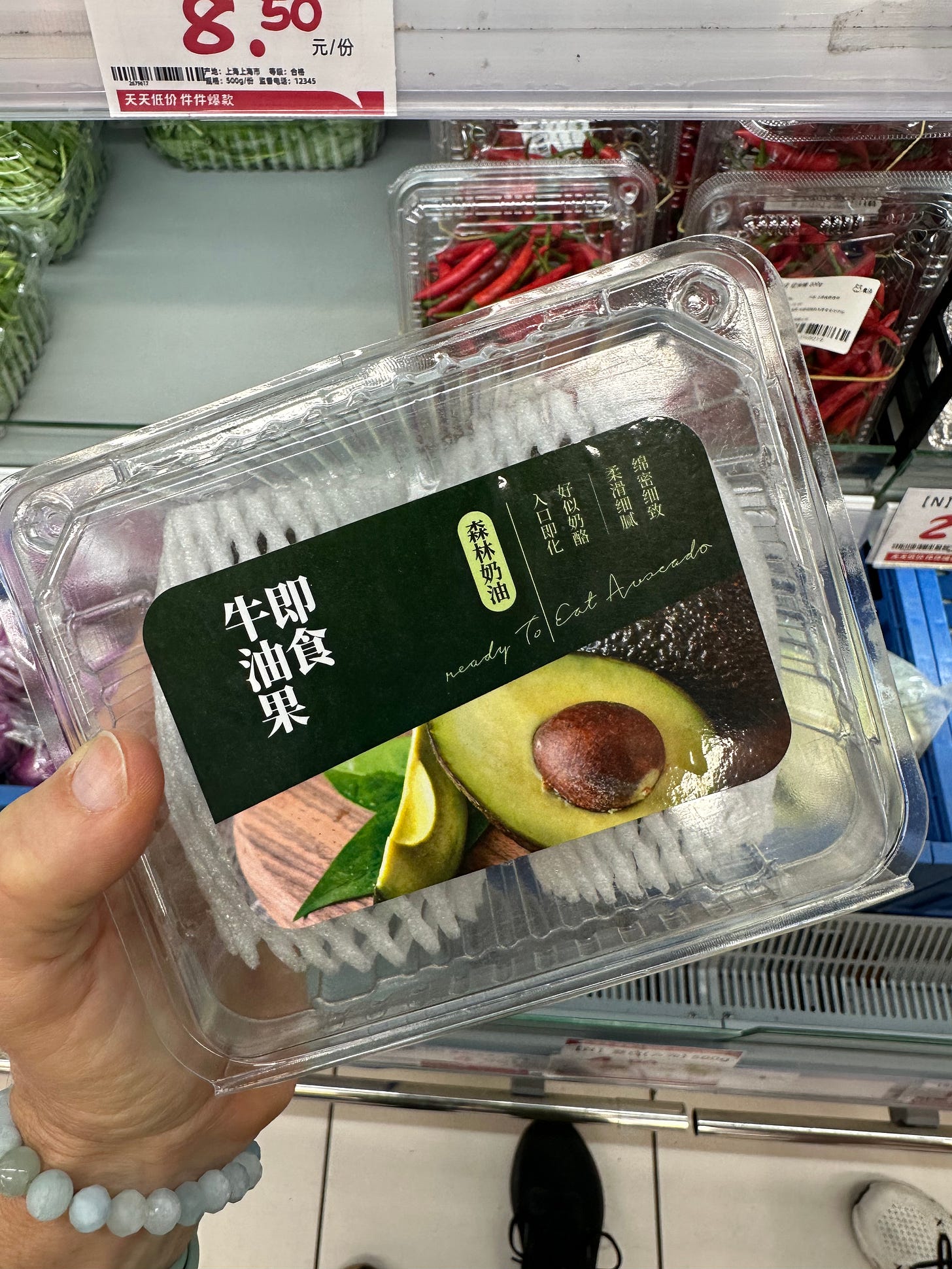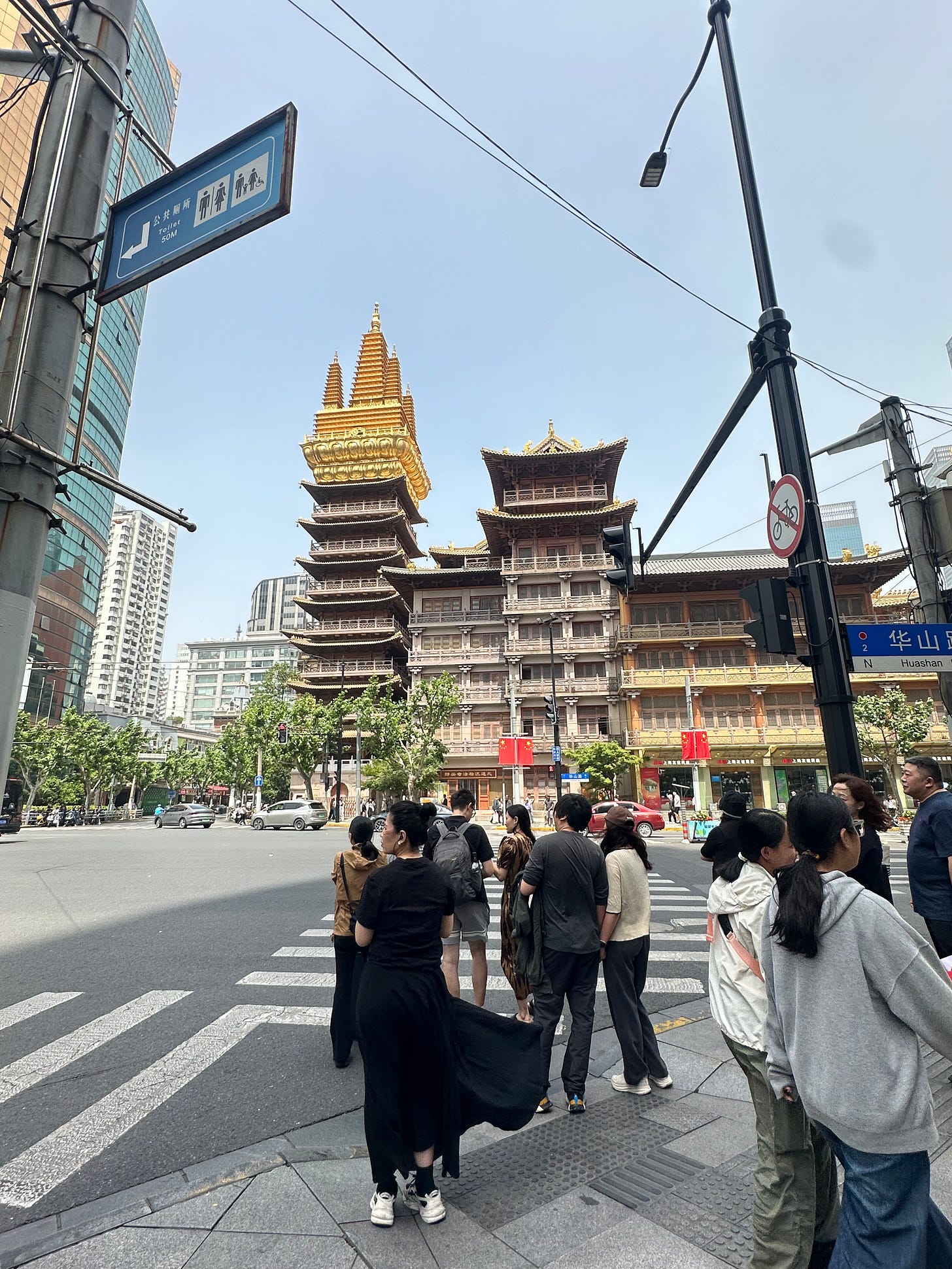Can AI plan your next road trip?
What I talk about when I talk about using AI for your travel plans, useful apps in China and how I navigated Taiwan.
Happy summer. You haven’t heard from me in awhile so welcome back to Technically Food, my newsletter about the food we eat. I don’t do recipes, although sometimes I’ll share something tasty. Mostly, I write about how technology is nudging what’s on our plates into different places – both tangible and conceptual.
Today, people are talking about how chefs are using AI. In a newsletter written after last year's Superbowl, I suggested we use AI to fine tune the quantities of food ordered for big events. Although some food from the Superbowl made it to people in need, most did not. Let’s get AI focused on Big Problems like food waste.
Am I using AI? Yes and no. The reason you didn’t hear from me in May is because I traveled to mainland China and Taiwan. There’s no way I can abbreviate four weeks of travel into one newsletter or one sentence but it was incredible. My China leg – two weeks in Shanghai, Beijing, Chengdu and Chongqing – was primarily planned by Shanshan Mei, a friend and colleague who writes about food and lives in China. We met 15 years ago at a foodie event in Brooklyn, New York. Our conversation began while standing next to a boat of freshly shucked oysters. A wonderful beginning to any friendship.

We’d last seen each other in San Francisco in 2024. Before that, we’d connected in Hong Kong in 2017. On May 5th, Shanshan met me in the Shanghai airport. When I had questions about history she turned to the ChatGPT app on her phone. As journalists, we talked about AIs limitations. The history she shared with me via ChatGPT — about the Great Wall, Chengdu’s panda obsession or some esoteric food or tea we enjoyed — was usually too generic and not specific enough. It was great high level. Cursory information. AI isn’t thorough and what it does give must be fact checked.
Later, on a food tour in Chengdu that I took on my own, I mentioned my book, Technically Food, which is translated into Chinese and Korean, to the guide. The first thing she did was look it up on DeepSeek, a China-based AI engine, also on her phone. DeepSeek gave plenty of incorrect results. I suggested she find the book wherever she might read or buy books.
The second half of my trip took me to Taiwan. To grease the wheels on early planning, we turned to AI for suggestions of where to road trip around the island. We prompted it for an 8-day road trip, with top travel ideas, length of stay, hotel options (budget to fancy), where to sight see and eat. The itinerary we got was a helpful starting point. If I had more time I might have pit a few different AI models against each other but in this case we only used ChatGPT.
Eventually, our list narrowed to eight cities. In addition to AI, I read Made in Taiwan, a cookbook, and Taiwan Obsessed, a dense blog with almost too much information. After a few solidly hot and humid days in Taipei, we rented a car, hit the road, stopped at Costco (more on that in a future newsletter) and began our road trip. Each morning and evening we’d glance back at what ChatGPT provided to see what we could fold into our next day.
A few things worked out from the list, but most stops made little sense in the driving directions from city to city. Most required going far out of the way or backtracking, stops that may be worth doing but once we were in the thick of driving, making time for a stop required weighing the desire to stop versus the desire to keep going. Some places were closed or didn’t seem worth the effort. In our daily food stops I found myself turning more often to Google Maps. I zoomed in on our driving route, looked at restaurants with high ratings, drilled down on reviews and looked over food pics. It made me remember the days of Yelp reviews, something I’d long ago stopped doing but were clearly still useful.

And here I will pause for a moment to tell you about Amap, a wayfinding app I used in China. Amap was lightyears better than Google Maps. It was dummy proof for subways, walking directions, restaurants, city biking and niche topics like yoga studios. But it didn’t work in Taiwan. On the flip side, Google Translate was the winner when I needed to talk to someone or read a menu.
It’s hard to believe I’m back. Technically Food isn’t a travel newsletter, but there will be a few more editions with notes from my trip. Let me know if you found this interesting, helpful or just plain fun. If you have travel advice to add, please leave a comment below.
Where you can find me:
I’m back at my desk in California, but you can view highlight reels from my trip to China and Taiwan on my Instagram profile page.
What I read on the trip:
I read two non fiction books about China: The River at the Center of the World by Simon Winchester and The Shortest History of China by Linda Jaivin. I read two books by Liz Moore: The God of the Woods and Long Bright River. Both are great, but I preferred the second one. I read Rabbit Moon by Jennifer Haigh, a novel which takes place in Shanghai. It was fun to read about a city I had just visited but after using my phone for every single financial transaction, this book felt dated when it referenced cabs and cash. And the last book, The Covenant of Water by Abraham Verghese, which I am almost done with, is wonderful. Thank you to everyone who gave me a reading recomendations, travel advice, tips and ideas. ChatGPT cannot replace you.




Yes ++ and thanks a million for the reading recommendations for China - I was looking for something like that. Also yes please on more tales of travel experiences & process
Great article - my takeaway is to drop fear, politics, and assumptions and travel more. It's hard to remember when traveling that you take you with you - so picking a favorite activity (eating! art!) is the best way to start an itinerary. Keep up the inspiration in travel and food knowledge! We all need it :)